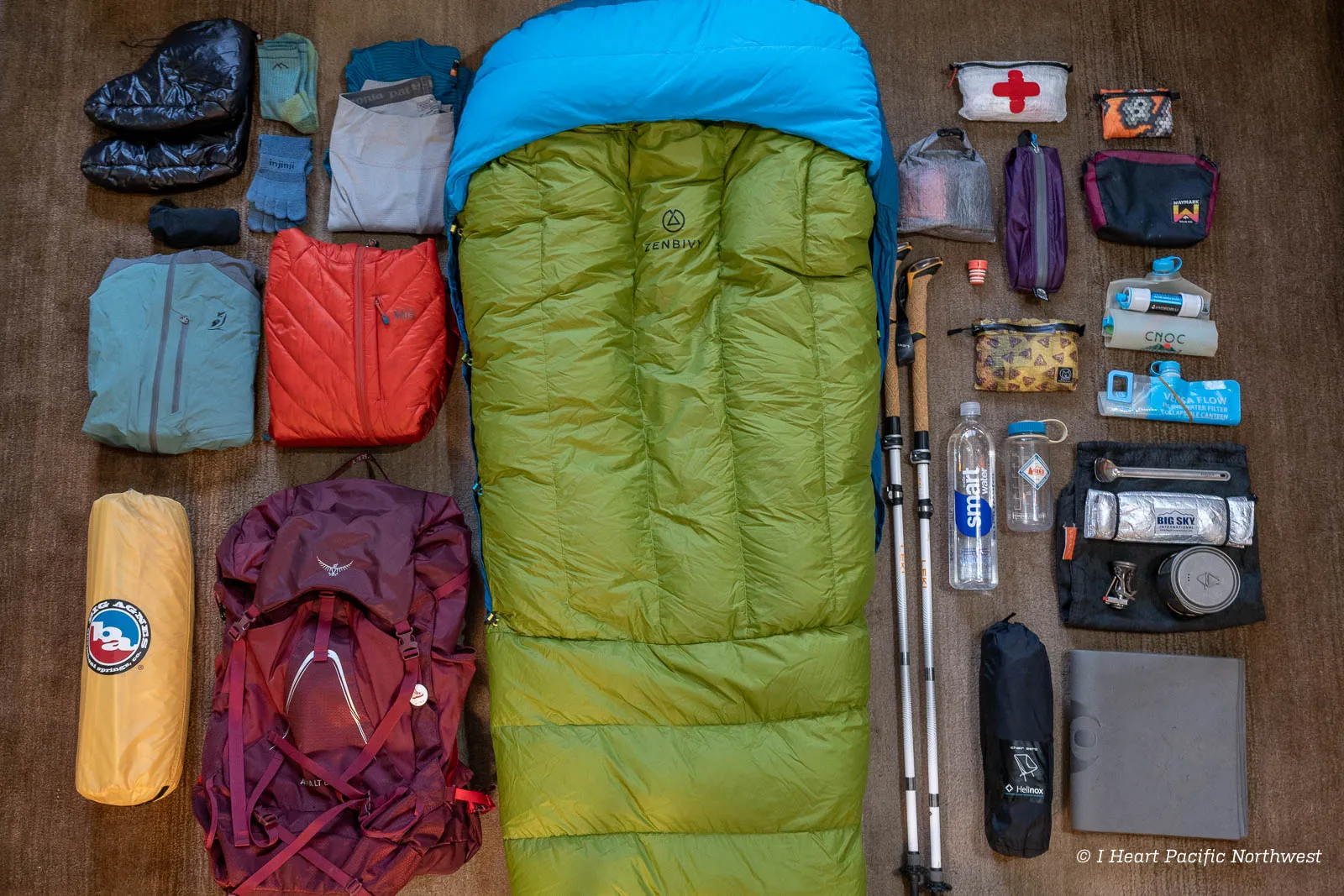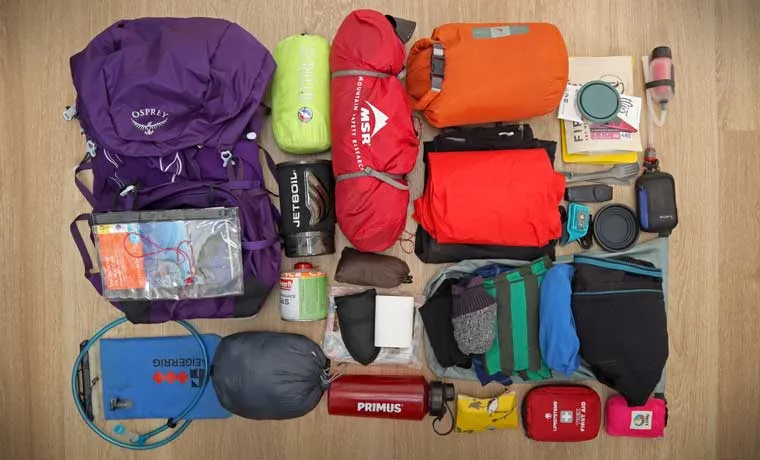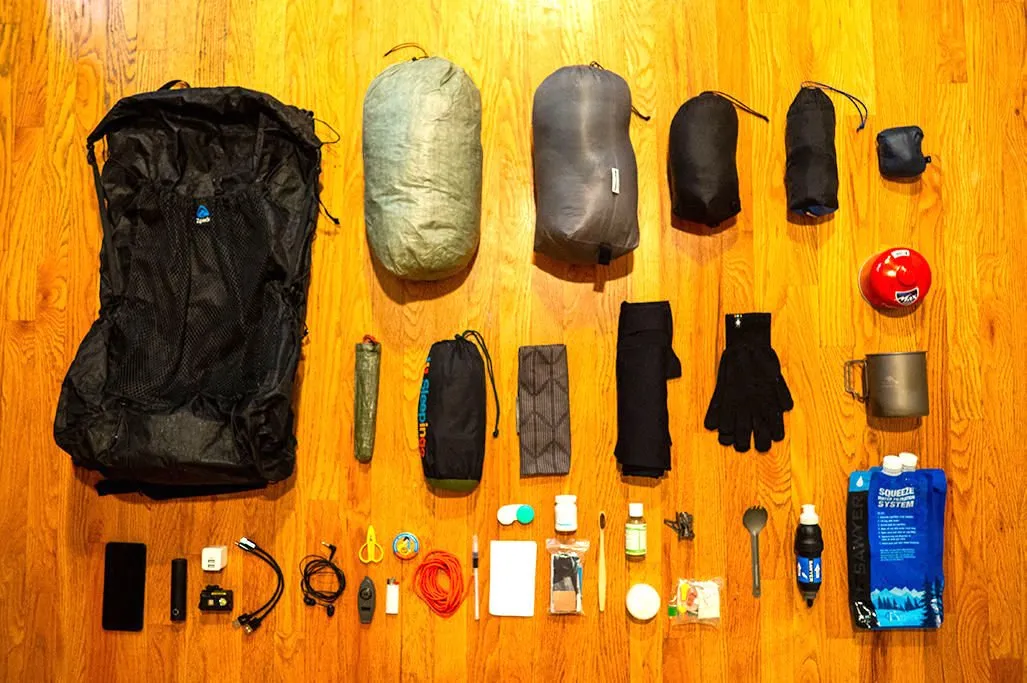After spending over 15 years hiking trails across the Pacific Northwest and completing numerous multi-day backpacking trips, I've learned that having the right backpacking gear list can make or break your wilderness adventure. This comprehensive guide covers everything you need to know about essential gear, from ultralight options to budget-friendly alternatives. Whether you're planning your first overnight trip or looking to upgrade your current setup, this detailed natureguests.com guide will help you make informed decisions for safe and enjoyable backpacking experiences.
The Big Three: Foundation of Your Backpacking Gear List

When I first started creating my backpacking gear list, experienced hikers consistently emphasized the importance of the "Big Three" - your shelter, sleep system, and backpack. These three items typically account for 60-70% of your pack weight and significantly impact your comfort and safety on the trail. During my early trips to Olympic National Park, I learned this lesson the hard way when my heavy, budget gear made every mile feel like a marathon.
Your shelter system forms the cornerstone of wilderness protection. I've tested dozens of tents over the years, from ultralight single-wall designs to spacious double-wall models. For most three-season backpacking, I recommend a lightweight tent weighing between 2-4 pounds. Features to prioritize include adequate ventilation, reliable waterproofing, and reasonable packed size. During a memorable storm on the Wonderland Trail, my well-ventilated tent prevented the condensation buildup that plagued other hikers' shelters.
Your sleep system directly impacts recovery and next-day performance. This includes your sleeping bag or quilt, sleeping pad, and pillow. Temperature ratings should match your expected conditions with a 10-15 degree buffer. I've found that a quality sleeping pad with an R-value appropriate for the season is just as crucial as the sleeping bag itself. For those interested in specific gear recommendations, our hiking gear for beginners guide provides detailed advice for new backpackers.
Backpack selection depends on your gear volume and preferred carry style. Modern backpacks range from minimalist 35-liter ultralight packs to expedition-sized 70+ liter models. I personally use a 45-liter pack for most three-season trips, which provides adequate space without encouraging overpacking. Key features include a comfortable suspension system, external attachment points, and easy access to frequently used items. The right pack should feel like an extension of your body rather than a burden.
Cooking and Hydration Systems
Essential Water Filtration
Clean water access is non-negotiable on any backpacking gear list. I've relied on the same water filtration system for countless miles:
🔥 Get LifeStraw Personal Water Filter - $17.49 on AmazonProper nutrition and hydration systems are critical components of any comprehensive backpacking gear list. During my multi-day trips through the Cascade Range, I've learned that lightweight, efficient cooking systems can transform your backcountry dining experience. The key is finding the right balance between weight, functionality, and reliability.
For cooking systems, I recommend starting with a simple canister stove setup. These systems typically weigh 3-6 ounces and provide reliable flame control for most conditions. Pair this with a lightweight titanium or aluminum pot, and you'll have everything needed for hot meals and beverages. My current setup includes a compact spork that serves multiple functions - an essential piece that belongs on every backpacker's gear list.
💡 Pro Tip: Multi-functional utensils save weight and space. I never hit the trail without my trusted spork:
⚡ UCO Utility Spork 3-in-1 - Only $4.98Water treatment deserves special attention in your backpacking gear list planning. I've used various filtration methods, from UV sterilizers to pump filters, but consistently return to lightweight squeeze filters for their reliability and ease of use. The ability to filter water directly into your bottle or hydration reservoir eliminates the need for separate containers and reduces overall system weight.
Consider your cooking style when selecting gear. If you primarily eat cold foods and only need hot water for beverages, a simple alcohol stove might suffice. However, if you enjoy elaborate trail meals, invest in a more sophisticated system with better heat control. Remember that fuel availability varies by region - canister stoves use widely available fuel, while liquid fuel stoves require specific types that may be harder to find.
Clothing and Footwear Essentials

Proper clothing selection can determine the success of your backpacking adventure. Every item on your backpacking gear list should serve multiple purposes, and this principle especially applies to clothing. I've refined my clothing system through years of trial and error, experiencing everything from unexpected snow squalls in summer to sweltering heat waves during shoulder seasons.
The layering system forms the foundation of backcountry clothing strategy. Base layers should wick moisture efficiently - I prefer merino wool for its odor resistance and temperature regulation properties. Mid-layers provide insulation and include fleece jackets or synthetic insulated pieces. Shell layers protect against wind and precipitation. During a particularly challenging section of the Pacific Crest Trail, this system allowed me to adapt quickly to changing conditions without stopping to dig through my pack.
⚠️ Weather Protection Essential: Don't compromise on rain gear quality. A reliable rain poncho is a must-have:
🌧️ FROGG TOGGS Ultra-lite Rain Poncho - $12.99Footwear represents perhaps the most critical component of your backpacking gear list. I've learned that proper boots can prevent injuries, reduce fatigue, and dramatically improve trail enjoyment. Modern hiking boots range from lightweight trail runners to traditional leather boots. Your choice depends on load weight, terrain difficulty, and personal preference. For most three-season backpacking, I recommend mid-height boots that provide ankle support without excessive weight.
Sock selection deserves equal attention to footwear. Quality merino wool or synthetic blend socks prevent blisters and manage moisture effectively. I always carry two pairs - one wearing, one spare. This simple redundancy has saved numerous trips from becoming miserable slogs. Our comprehensive hiking gear for women guide includes specific recommendations for female hikers seeking optimal fit and performance.
Personal Care and Optional Extras
Essential Personal Care Items

Personal hygiene and comfort items complete your comprehensive backpacking gear list. While these items might seem secondary compared to shelter and safety equipment, they significantly impact trail morale and health during extended trips. I've learned that maintaining basic cleanliness and comfort prevents minor issues from becoming major problems during multi-day adventures.
Essential personal care items include biodegradable soap, toothbrush and toothpaste, toilet paper, and personal medications. I always pack items in waterproof containers to prevent moisture damage. Quick-dry towels serve multiple purposes beyond drying - they work as washcloths, emergency bandages, and even pot holders. During a particularly muddy section of the Olympic Coast, having proper cleaning supplies made the difference between discomfort and genuine misery.
Ultralight Gear Considerations
Ultralight backpacking philosophy emphasizes carrying only essential items while minimizing weight. Every item on your backpacking gear list should serve multiple purposes or provide critical function. This approach requires careful consideration of each piece's weight-to-utility ratio. I've gradually transitioned to ultralight principles, reducing my base weight from 25 pounds to under 15 pounds without sacrificing safety or comfort.
Optional extras depend on personal preferences and trip objectives. Photography equipment, camp chairs, books, and games can enhance the backcountry experience but add weight. I selectively include these items based on trip length, group dynamics, and personal priorities. A lightweight camp chair might seem frivolous but can dramatically improve campsite comfort during extended stays. For those interested in minimalist approaches, our minimalist hiking gear guide provides detailed strategies for reducing pack weight.
Seasonal Gear Adaptations
Your backpacking gear list should adapt to seasonal conditions and regional climate patterns. Summer gear emphasizes sun protection, insect defense, and heat management. Spring and fall require additional insulation and weather protection. Winter backpacking demands specialized equipment including insulated sleeping systems, traction devices, and emergency bivouac gear. I maintain separate gear collections for different seasons, though many items overlap between categories.
Regional considerations also influence gear selection. Desert hiking requires extensive sun protection and water storage capacity. Mountain environments need layered clothing systems and altitude-appropriate gear. Coastal areas demand waterproof protection and corrosion-resistant equipment. Research your destination thoroughly when creating your final backpacking gear list. Local ranger stations provide valuable insights into current conditions and recommended gear for specific areas.
Conclusion
🎯 Key Takeaway: Building the perfect backpacking gear list requires balancing weight, functionality, and personal needs while prioritizing safety above all else.
Remember to regularly review and update your backpacking gear list based on experience and changing needs.
Creating an effective backpacking gear list represents an ongoing process rather than a one-time event. Through years of trail experience, gear testing, and learning from both successes and mistakes, I've developed systems that work reliably across various conditions and environments. The key lies in balancing weight considerations with functionality while never compromising safety or essential comfort items.
Start with quality basics in the Big Three categories - shelter, sleep system, and backpack - then gradually refine your backpacking gear list based on actual field experience. Every hiker's needs differ based on physical capabilities, risk tolerance, and personal preferences. What works perfectly for weekend warriors might prove inadequate for thru-hikers, and ultralight enthusiasts may find traditional gear unnecessarily heavy.
Remember that gear represents only one component of successful backpacking. Physical preparation, route planning, weather awareness, and wilderness skills prove equally important. The most expensive backpacking gear list cannot compensate for poor preparation or bad decision-making. Invest time in developing outdoor skills alongside building your gear collection.
Consider your gear purchases as long-term investments in outdoor adventures. Quality equipment, properly maintained, can provide decades of reliable service. I still use several pieces purchased over ten years ago, and they continue performing flawlessly. Cheap gear often proves expensive when it fails during critical moments or requires frequent replacement.
Finally, remember that the perfect backpacking gear list enables experiences rather than defining them. The most memorable backcountry moments rarely involve gear - they involve connections with nature, personal challenges overcome, and relationships strengthened through shared adventures. Your gear should fade into the background, providing reliable support for the experiences that truly matter.
Ready to start your backpacking journey? Begin with the essentials, test your gear locally, and gradually build confidence for longer adventures. The wilderness awaits, and with proper preparation, your backpacking gear list will support countless memorable experiences in nature's most beautiful places.


